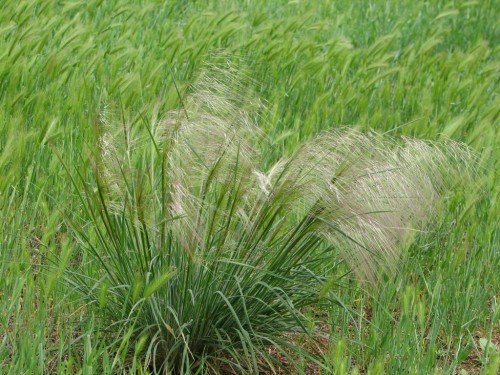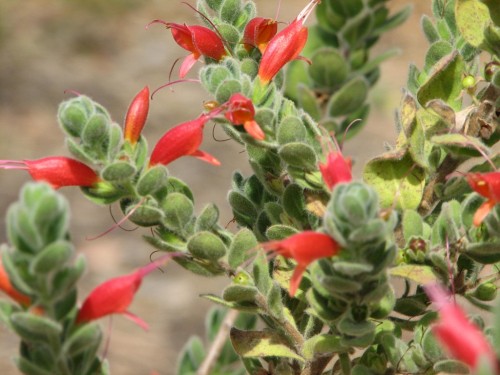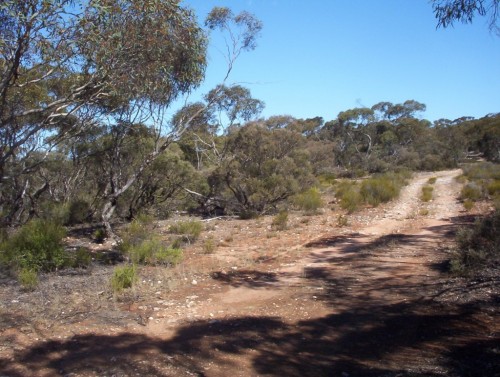Lasiopetalum baueri (Slender Velvet Bush)
The plant in the photo (two plants in fact) were pushed out because of the development taking place. This patch was suppose to be saved.
Lasiopetalum baueri is a pretty plant when in flower and attractive anyway because of the overall rusty appearance caused by the dense hairs on the stems. It is drought tolerant and hardy to most frosts. It puts on its flower display in spring and responds well to light pruning after flowering. It would make a good hedge or low screen plant. The one I have in the garden is a rounded shrub because of the tip pruning that I do to take cuttings
Rescuing Eremophilas
Plants that have been there for many years went today. We attempted to move a dozen of them by chopping the tops back hard and getting them into the ground again quickly. I have been using the chopped material to take cuttings. The trouble is that some of these have the reputation for being difficult to strike. That is why they were planted there in the first place. It was an attempt to conserve the plants at a time when it was not popular and arboretums were only just beginning to be seen as a place to conserve plants.
The photo is of an Eremophila (emu bush) which has probably gone now. No one seemed to know for sure whether it would be in the way or not. I am not sure of the name of this species. Some homework for me.
Austrostipa Species
I intend to master this book as I would like to be able to go further than say ‘that is an Austrostipa’.
I still have not found a suitable species to use as a native grass lawn. Our naturally low rain fall is the problem. There is no point in trying to establish something that uses as much water as some of the lawn grasses available. I have heard that there will possibly be a need to run a sprinkler once a month to keep the lawn looking like a lawn in the summer. That is a a problem in a particularly dry year as we are having. I guess the decision has to be made about whether we want to have a green patch or not. What would be the purpose of a native grass lawn?
More information on Australian Native Grasses may be found here.
Planting More Eremophilas (Emu Bushes)
More plants found a spot in the ground today. Eremophilas seem to be the best option at the moment. Those I planted were Eremophila splendens, Eremophila ionantha, a very prostrate form of Eremophila glabra with deep red flowers, Eremophila debilis, a yellow form of Eremophila hillii, Eremophila glabra ssp. carnosa, Eremophila denticulata, Eremophila polyclada and Eremophila calorhabdos.
I was very aware of how ‘non wetting’ are some of the spots in the front yard. I’ve been told that potting mixes which have been wet very well will, on drying out, become water repellant. I am sure that must also happen to soil. So the next job needs to be treating the ground with a soil wetting agent and doing the same to the potted plants. With water at a premium this year, every drop needs to be accounted for.
More Information On Growing Eremophilas
Mallee Scrub
‘The Mallee’ is a term covering several scenarios. The Mallee is a term used to describe areas of the country which are covered in mainly Eucalypts of the mallee type. A feature, and this is what I love, is the variety of smaller plants forming the understory. These plants are often prolific and very colourful flowering plants.
We talk about Mallee towns being those towns, usually in farming communities, which exist because of the mallee areas being cleared for farming.
The photos show parts of Lowan Conservation Park including the access track through the park.





